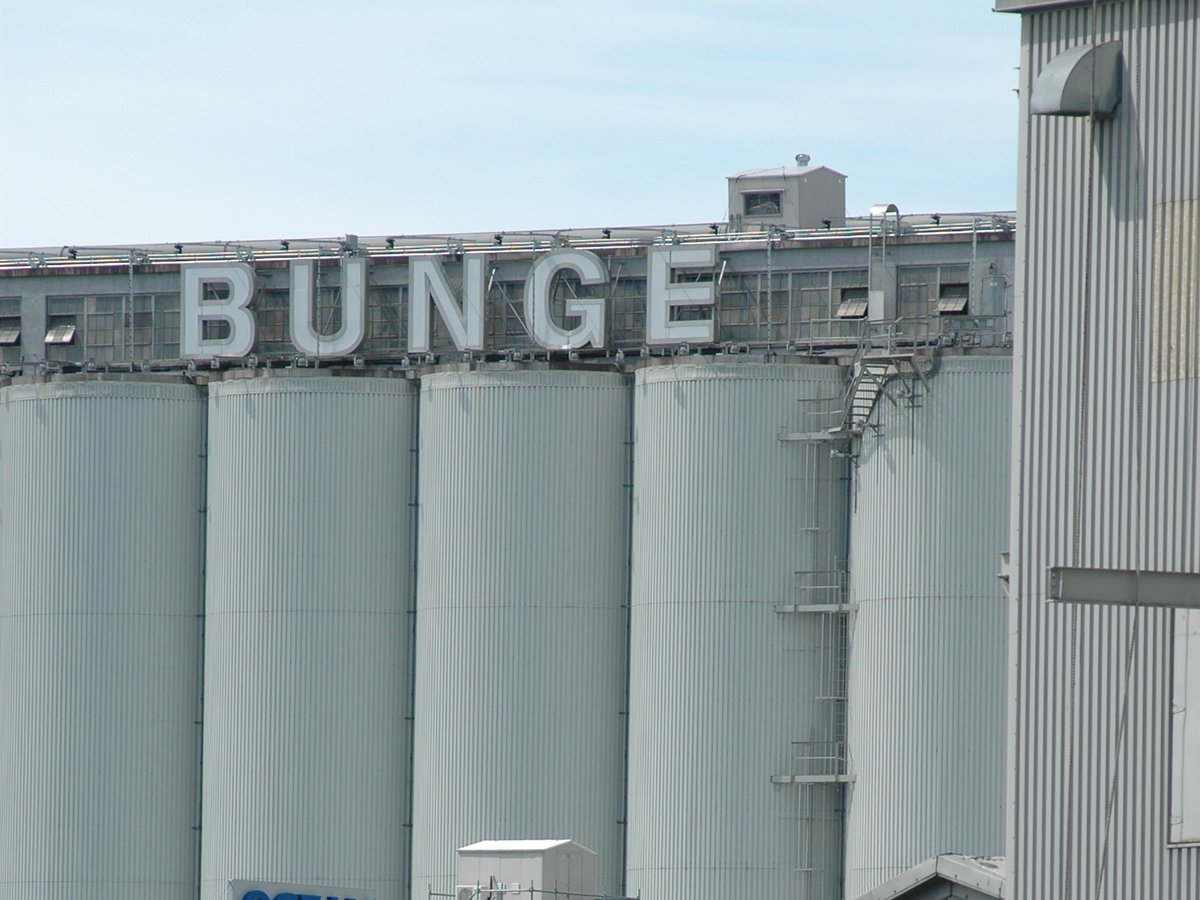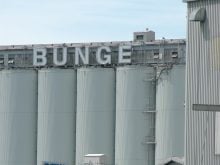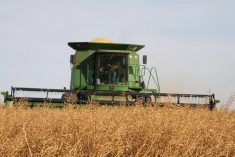Several factors must be considered when determining how much fertilizer can be safely placed with seed: fertilizer source; seeding equipment; soil properties and conditions; crop type; seed quality and risk factors.
Fertilizer can damage seed and seedlings through ammonia toxicity, salt effects or both. Urea (46-0-0) and liquid UAN (urea ammonium nitrate, usually 28-0-0) are the main causes of ammonia toxicity. Salt effects are usually associated with ammonium sulfate (21-0-0-24 or similar analyses), potash, ammonium nitrate and ammonium phosphate.
“Cereals, oilseeds, pulses and grasses suffer permanent damage if exposed to high concentrations of ammonia,” says Alberta Agriculture crop specialist Doon Pauly.
Read Also

Bunge’s crop mix is changing
Bunge has predominantly been a soybean processing firm, but that’s about to change after the merger with Viterra with softseed processing and grain merchandising gaining ground.
“Small-seeded crops such as canola or flax are permanently damaged by high salt concentrations in the seed row.
“Salt effects may delay cereal germination and emergence, but with salt dilution through rainfall, these crops will recover and grow normally. Most seed-placed fertilizer guidelines focus on ammonia toxicity and are based on urea-nitrogen application rates. Unfortunately, in the case of blended fertilizers that have both ammonia toxicity and salt effects, there is insufficient research to establish safe rate recommendations.”
Seed bed use, or SBU, is the width of seed and fertilizer spread divided by the row spacing and reflects the relative concentration of fertilizer in the seed row. With high SBUs, seed and fertilizer are spread over a larger area and seed row conditions are usually safer than they are with low SBUs.
Seeding depth and packing also need to be considered, as does ground speed during seeding because excessive speed may compromise seed and fertilizer placement as well as the overall quality of the seeding operation.
Crop damage from seed-placed fertilizer is more pronounced when other stresses compound the effects of the fertilizer, such as uneven crop residue distribution, deep seeding and poor seed-soil contact.
“The success of seed-placed fertilizer operations is highly dependent on soil moisture at seeding and in the first week or so after seeding,” Pauly said.
“With soil at or near field capacity, the toxic effects of fertilizer are diluted and seeds can germinate and develop with few problems. Fine textured soils such as clay loams and clays not only hold more water than coarse soils such as sands and loamy sands, but clay surfaces also adsorb ammonium from the soil solution and further reduce the toxic effects of nitrogen fertilizers.
“Dry, eroded hilltops with low soil organic matter levels and the presence of free lime (high pHs) are prone to injury from seed row fertilizer. ‘Safe’ seed-placed fertilizer rates in these exceptional areas may be much lower than the rest of the field and should be managed accordingly.”
Cereals withstand more seed-placed fertilizer than oilseeds. Oats are slightly more tolerant than barley, which is slightly more tolerant than wheat and flax is slightly more sensitive than canola.
If everything else is equal, seed with poor vigour will suffer more damage from seed-placed fertilizer than vigorous seed. Published guidelines for safe seed-placed fertilizer rates assume seed quality is good.
Seed-placed fertilization involves risk. Under some conditions, high rates of seed-placed fertilizer will cause minimal injury, yet in other situations the same application rates will cause extensive damage. Seed or seedling mortality may not always lead to lower yield, but thin stands tend to tiller and branch, often delaying maturity by several days or more.














